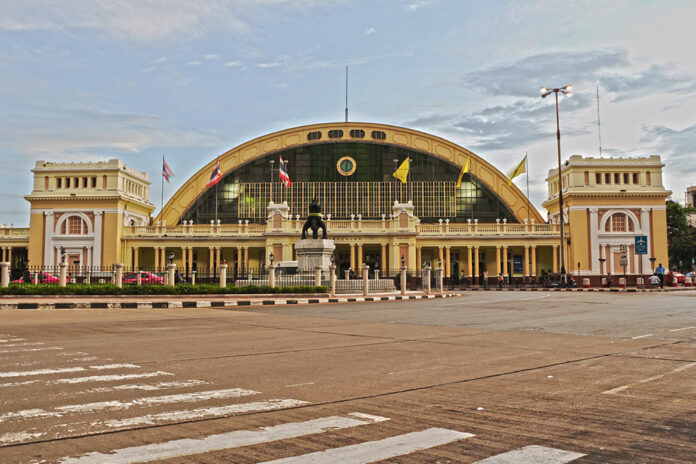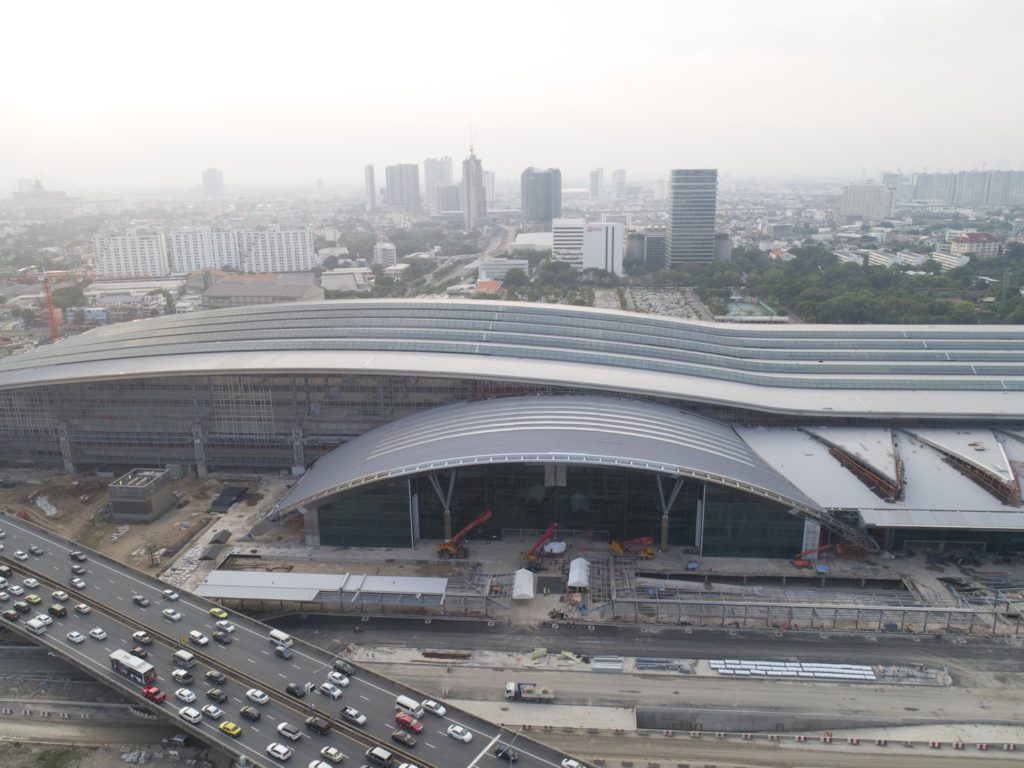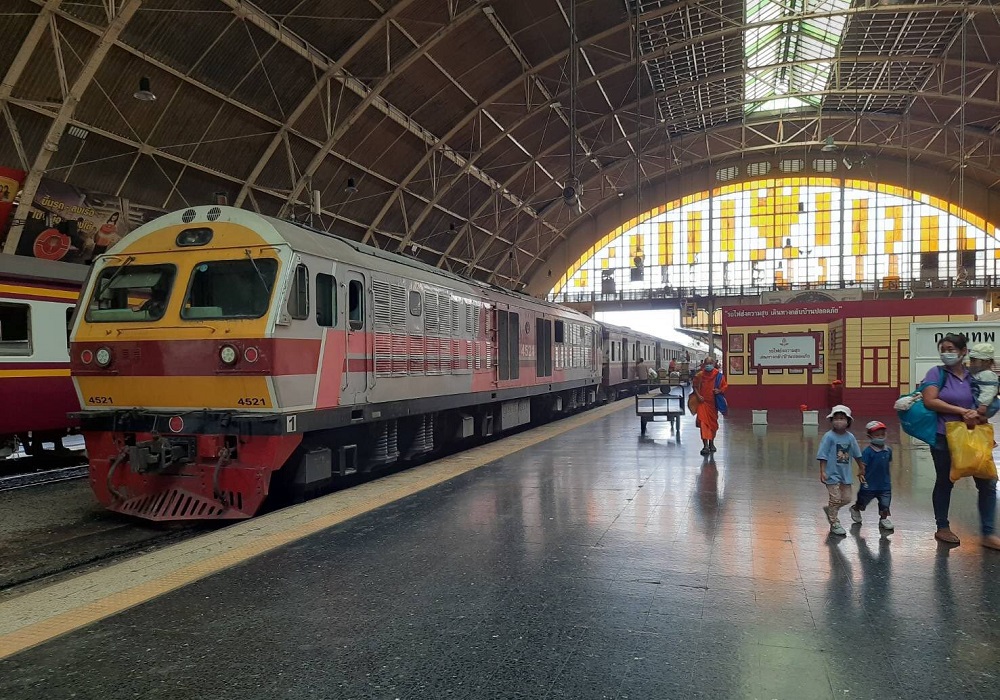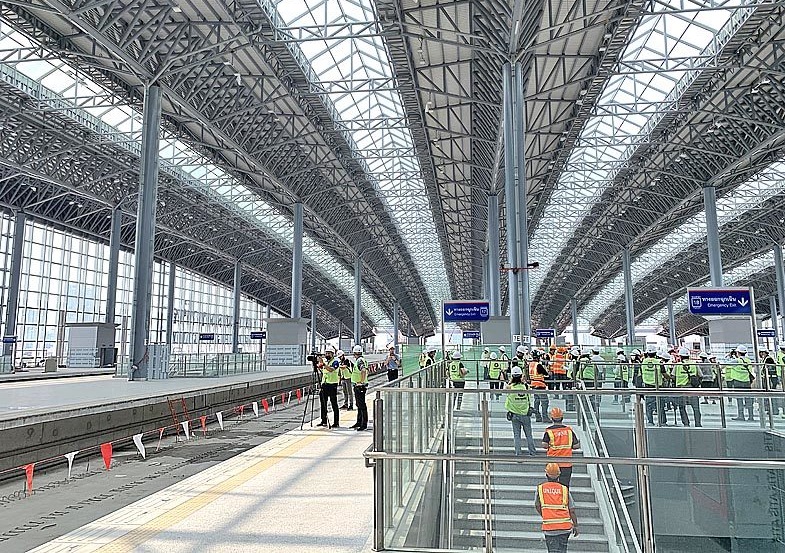
BANGKOK — The historic Bangkok Railway Station, or Hua Lamphong, will cease its operation later this year after a century of service, state railway officials said Friday.
The terminal will be closed down as soon as the newly built Bang Sue Grand Station opens to the public, possibly in November, according to public transport authorities. The abrupt announcement raised concerns that commuters, including many in the working class, will once again bear the brunt of chaos during the transition.
“We’re preparing plans for it,” State Railways of Thailand spokesman Aekkarat Sriarayanpong said by phone. “We’re still in the process of coordinating with relevant agencies. The Bang Sue Grand Station will become the country’s main transit hub so there are a lot of details to be considered.”
He said the plan was laid out by PM Prayut Chan-o-cha and transport minister Saksayam Chidchob, who want to see the sprawling complex of Bang Sue Grand Station becoming the new hub of rail transportation.
Bang Sue Grand Station is located about eight kilometers north of Hua Lamphong. Once it opens, the 341 billion baht station will serve all SRT regional train lines, the MRT Blue Line, and the Airport Rail Link, as well as any high-speed trains in the future.

Aekkarat could not give any further details about the plan, including the exact date of the closure. But transport minister Saksayam told reporters earlier this week that trains would start departing from Bang Sue Grand Station as early as November. He billed it as a solution to Bangkok’s traffic woes.
“Once the Red Line becomes operational this November, Hua Lamphong station will be closed immediately,” Saksayam said on Monday. “There will be no trains running on the ground into the city, so we can solve traffic problems as planned. This includes freight trains as well.”
The government has yet to make any official announcement on the matter. And there are already signs that the change will cause some inconvenience for the passengers.
Saksayam said certain train lines are not yet connected to the Bang Sue Grand Station. They will terminate at stations in the suburbs of Bangkok instead, and passengers will need to transfer to the Red Line trains to get into the city, he said.
“The Bang Sue Grand Station will become the center of the SRT rail network,” Saksayam said. “I have instructed the SRT to prepare integration plans of long-distance trains. For example, the SRT Southern Line will terminate at Bang Bumru station, where passengers can transfer to the Red Line and take a train ride to Bang Sue station.”

The Red Line will consist of a 41 kilometers-long electrified commuter rail, connecting Bangkok’s suburbs of Taling Chan in the west and Rangsit in the north to Bang Sue.
Jirawat Jungwat, the founder of a Facebook page dedicated to public transportation developments, said the shutdown of Hua Lamphong station will cause inconvenience to commuters if there are no adequate backup plans by the transport authorities.
“Many people take trains to work in the capital daily. If trains are to be stopped at Bang Sue, there should be a shuttle service to link with Hua Lamphong,” Jirawat, who runs “Thailand Infrastructure” page, said by phone.
“Moreover, most of the existing trains are not designed for indoor stations like Bang Sue,” he said. “They produce a lot of exhaust which can fill up the platforms.”
Jirawat suggested commuter services should be allowed to run into Hua Lamphong, while leaving long-distance trains at Bang Sue. He also criticized Saksayam for seeing the public transport system as part of the traffic congestion in the capital.

“It’s a completely wrong mindset to lay blame on trains,” Jirawat said. “If people can’t conveniently take trains to the city center, they will end up on roads and cause even greater traffic problems. The minister should work out solutions first before announcing such a radical change.”
A similar decision to abruptly move long distance van services out of the area around the Victory Monument in 2016 caused a mayhem for many commuters.
Bangkok Railway Station, or Hua Lamphong, opened to the public on June 25, 1916, and has since served as the starting point of train journeys to all regions of Thailand. The station was used by an average of 70,000 passengers per day before the pandemic struck in early 2020, severely affecting interprovincial travel.
The Neo-Renaissance building features a distinctive glass arch on its facade, a work by Mario Tamagno. The Italian architect also designed other icons in the capital such as the Ananta Samakhom Throne Hall and the Neilson Hays Library.
Officials had said that Hua Lamphong will be turned into a museum.















































